If You See This Flower in Your Yard, Call Local Officials Immediately
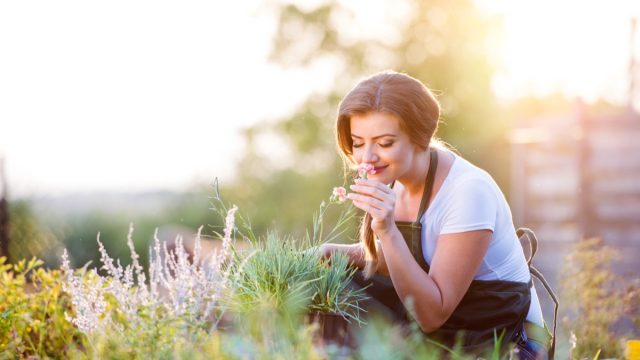
Most of us are well aware that there are some highly toxic plants out there. But it’s not just the three-leaved greenery like poison ivy and poison oak that you need to keep an eye out for in the woods—even a seemingly innocuous flower can do some serious damage. There’s actually one flower that could be growing in your yard that is so hazardous, experts say you should reach out for professional help immediately. Read on to find out if you need to call your local officials.
RELATED: If You See This Bug, Call Local Officials Immediately, Experts Warn.
If you see giant hogweed in your yard, call local officials.
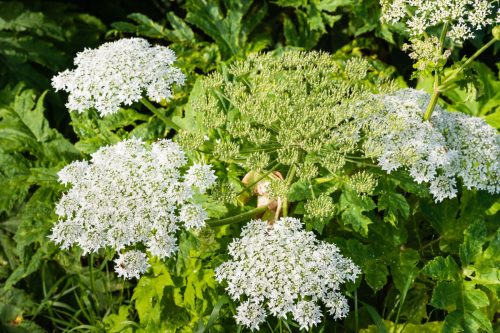
If you see a giant hogweed growing in your yard, it’s not a flower you want to stop and smell. As the New York State Department of Environmental Conservation (DEC) explains, giant hogweed is technically an herb, but it is most recognizable by its white flower blooms. The white flowers are typically clustered into an umbrella shape that stretches two and a half feet tall. And the stem of this herb is covered in purple splotches and coarse white hairs.
It can be found anywhere, from roadsides to fields to your own backyard, but it tends to grown in sunlit areas with moist soil. The good news is the giant hogweed is easy to recognize since, as its name indicates, it can grow anywhere from 7 to 14 feet tall.
According to CBS News, giant hogweed tends to grow in Maine, Maryland, Michigan, New Hampshire, Ohio, Oregon, Pennsylvania, Vermont, Washington, and it is especially prominent in New York.
Since it’s both toxic and invasive, experts say you should call local officials immediately if you think you have giant hogweed growing in your yard. Officials will use herbicides and cut the plants’ roots to try to eradicate them, per The New York Times.
Giant hogweed can severely damage your skin.
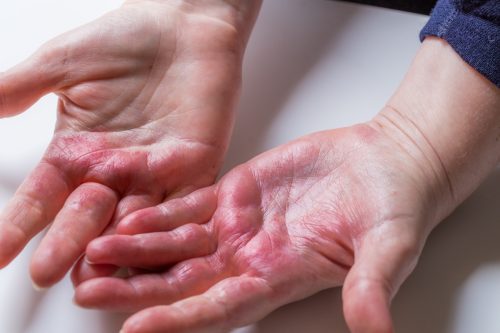
Even if you wait to call local officials, you should never touch this herb yourself, says the DEC. Making contact with giant hogweed can result in severe skin damage, such as painful blisters and long-term scarring.
According to Poison Control, giant hogweed has toxic chemical compounds called furanocoumarins in its sap. When someone’s skin comes in contact with the toxic sap, it makes it more sensitive to ultraviolet light and can result in phototoxic dermatitis, an inflammatory skin reaction to the sun. Due to this reaction, you could experience anything from mild redness and irritation to blisters, burns, and scarring. And even if your irritation clears up within a few days, the affected area can remain hypersensitive to the sun for years, producing reoccurring lesions and blisters, per Prevention.
RELATED: And for more news you can use, sign up for our daily newsletter.
Coming into contact with giant hogweed can also cause blindness.
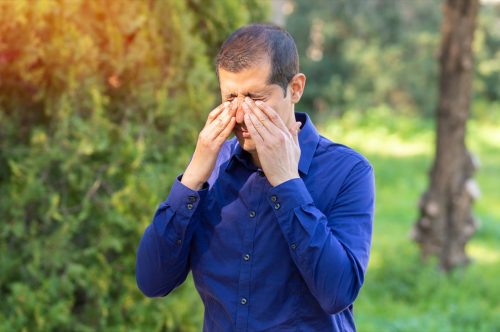
But a severe skin reaction may be the least of your worries when it comes to giant hogweed. Eye irritation and severe eye injuries have been reported by some of those who have come into contact with the toxic plant, according to Poison Control. And if the sap makes contact with your eye for too long, if can cause temporary vision loss that may lead to permanent blindness, per the experts at Grosinger, Spigelman & Grey Eye Surgeons.
“Not everyone who comes into contact with the sap will have a reaction, but because of the potential to cause significant injury, it is best to avoid contact whenever possible,” Poison Control advises of giant hogweed.
If you come into contact with giant hogweed, you need to take action immediately.
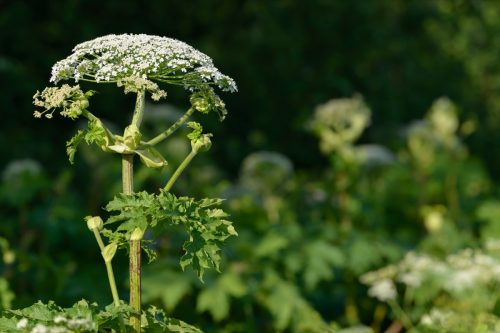
Reactions from the sap can start quickly, within 15 minutes of initial contact, according to Poison Control. So if you’ve come into contact with any part of a giant hogweed, you need to act quickly. The first thing you need to do is wash any affected areas immediately with soap and water. You should also avoid sunlight for at least 48 hours.
If the sap makes contact with your eye, you’ll also need to rinse them out with water for at least 15 minutes and put on sunglasses to avoid eye-to-sun contact. Prevention also recommends keeping the affected areas covered from the sun or diligently covered in sunscreen over the next few years, as they will remain hypersensitive.
“For minor skin irritation, topical steroids like hydrocortisone cream can be applied to help ease discomfort,” Poison Control advises. “If symptoms persist or worsen, then it is important to seek medical evaluation.”
RELATED: If You See These Flowers in Your Yard, Don’t Go Near Them, Officials Warn.